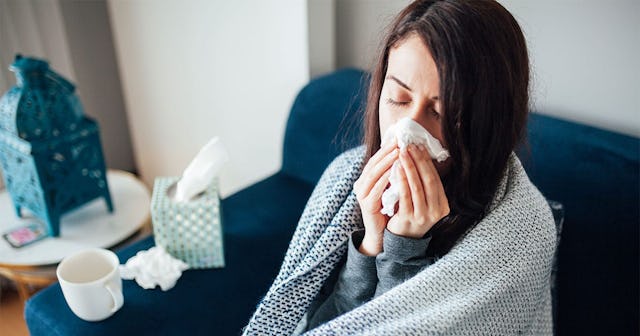Doctors Warn That Flu Risk To U.S. Is Much Greater Than Coronavirus

Despite coronavirus warnings, doctors are urging people to focus on the immediate risk of the flu
The deadly new international health crisis, coronavirus, is causing concern all over the world. But doctors are urging their patients in the U.S. to focus on the risk of contracting the flu, which is much more realistic and immediate a danger than contracting coronavirus.
Though a handful of cases have tested positive for coronavirus in the U.S., the chances of contracting it are exceedingly low. Whereas the flu, which kills tens of thousands of people annually, is an immediate risk.
This flu season has already seen more than 15 million victims, according to the Centers for Disease Control and Prevention estimates. More than 150,000 Americans have been hospitalized, and more than 8,000 people have died from their infection. And this isn’t even one of the worst flu seasons in recent history.
“Last year, we had 34,000 deaths from flu,” epidemiologist Brandon Brown of the University of California, Riverside, tells NPR. On average, the flu is the direct cause of 12,000 to 61,000 deaths each year in the United States.
The best way to prevent yourself from catching the flu is, of course, the flu vaccine. Though most flu shots are distributed in the fall, it’s actually not too late to get vaccinated against it. The flu season technically doesn’t end until April-May.
Obviously, washing our hands is another great way to prevent the spread of germs. Good old-fashioned soap and water remains the best way to achieve clean hands, but hand sanitizer is a close second in case you’re not near a sink. Interestingly, the FDA has issued a warning against GOJO, Purell’s parent company, for implying hand sanitizer can kill flu germs and even ebola. According to the FDA, claims like these suggest Purell is a drug rather than an over-the-counter consumer and healthcare antiseptic.
“Our hands are one of the main ways we can transmit a virus,” Brown says. As a reality check, begin to notice everything you touch in a day. “We shake other people’s hands, we touch surfaces, open doors.”
The CDC also offers some solid tips on hand-washing — and it’s never a bad idea to re-familiarize ourselves with the technique, especially if you have little ones at home who tend to do a less thorough job than recommended.
In addition to inhaling airborne particles from a neighbor’s cough or sneeze, touching your hand to a contaminated surface and then to your eyes, nose or mouth is how the virus most often gets inside you. So please, cough into your elbows for the love of Beyoncé and be aware of contaminated surfaces — especially in public places this time of year.
The chances of getting the flu are very high — much higher than the coronavirus — if these precautions aren’t adhered to, and since we’re smack in the middle of the current flu season, we need to remain focused on preventing it.
This article was originally published on